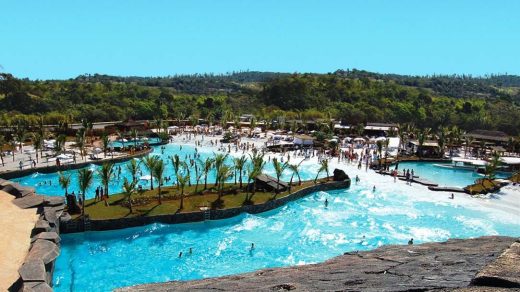In the heart of the Pacific Northwest, nestled amidst the towering pines and cascading waterfalls, lies the city of Portland, Oregon. Known for its vibrant culture, artisanal coffee shops, and quirky food trucks, Portland is a city that thrives on its connection to nature. It’s a place where urban and wilderness seamlessly coexist, creating a haven for me. I’ve had the privilege of exploring the pristine natural wonders surrounding this eco-friendly city. I’ll share my epic journey through the untamed beauty of Portland’s neighboring national parks and the exhilarating outdoor activities that await you.
A Gateway to the Wild
erene reflections of the mountain, perfect for kayaking or picnicking. If you’re up for a challenge, the Timberline Trail encircles the mountain, offering a multi-day backpacking adventure you won’t soon forget.
My own journey through the Columbia River Gorge and Mount Hood National Forest was nothing short of transformative. As an avid hiker and nature enthusiast, I had long heard tales of the natural wonders surrounding Portland. Yet, it wasn’t until I set foot on the misty Benson Bridge at Multnomah Falls that I truly understood the depth of its allure.
The Columbia River Gorge, with its cascading waterfalls, lush greenery, and diverse hiking trails, offered a tantalizing taste of the Pacific Northwest’s natural splendor. From the moment I arrived, the cool, crisp air enveloped me, and I could sense the adventure that lay ahead.
Multnomah Falls, the crown jewel of the Gorge, was my first stop. The sight of the water tumbling over the cliffs and plunging into the pool below left me spellbound. I gazed in awe at the 620-foot cascade, its waters glistening in the early morning light. As I walked across the Benson Bridge, I was enveloped by a fine mist that painted rainbows in the air. The experience was nothing short of magical, as though I had stepped into a scene from a fantasy novel.
From Multnomah Falls, my journey continued to the Eagle Creek Trail. The trail, adorned with vibrant ferns and moss-covered boulders, wound its way along the cliffs of the Columbia River Gorge. As I hiked, I could hear the distant rush of water, a constant reminder of the countless waterfalls that awaited.
Punch Bowl Falls was the first waterfall to greet me on this trail. The water plunged into a round basin, creating a mesmerizing natural amphitheater. I couldn’t resist taking off my boots and dipping my toes into the cool, clear pool. It was a moment of pure bliss, feeling the connection between the earth and myself.
Further along the trail, I encountered the enchanting Tunnel Falls. As the name suggests, a trail passed directly behind the waterfall, allowing me to walk through a watery corridor, the sound of the falling water reverberating in my ears. It was an adventure that ignited my sense of wonder and left me with a sense of exhilaration.
My journey through the Columbia River Gorge concluded with a visit to the Vista House. This historic observatory, perched high above the gorge, offered a panoramic view of the stunning landscape. From this vantage point, I could see the mighty Columbia River winding through the Gorge, its waters reflecting the surrounding cliffs and forests. It was a moment of reflection, and I realized just how small we are in the grand tapestry of nature.
After bidding farewell to the Columbia River Gorge, I made my way to the majestic Mount Hood National Forest. Mount Hood, a dormant volcano, rose in the distance, its snow-capped peak a beacon of adventure. My heart raced with anticipation as I contemplated the outdoor experiences awaiting me in this vast wilderness.
The Timberline Lodge, an architectural gem that blended seamlessly with its natural surroundings, served as my basecamp for exploration. The lodge, built in the 1930s as part of the Works Progress Administration, exuded rustic charm and history. It was as if I had stepped into a mountain retreat frozen in time. The massive stone fireplace, adorned with intricate carvings, provided warmth and comfort, while the timbered interiors invited cozy relaxation.
My first adventure in Mount Hood National Forest was a visit to Trillium Lake, a serene body of water framed by the towering Mount Hood. The reflections of the mountain on the calm lake’s surface were picture-perfect. I couldn’t resist renting a kayak to paddle on the lake, allowing the sheer majesty of the mountain to wash over me. Picnicking on its shores, I watched as the sun dipped below the horizon, casting a warm alpenglow on Mount Hood’s glaciers.
However, my most challenging and rewarding experience in Mount Hood was the Timberline Trail. This roughly 40-mile loop encircled the mountain, offering a thorough immersion in the wilderness. I embarked on the journey, equipped with my backpack, hiking boots, and a sense of adventure that burned brightly.
The trail meandered through diverse landscapes, from subalpine meadows to dense forests. Each turn brought new vistas, and as I ascended, the world below me transformed. I found myself in a landscape of wildflowers, with vibrant hues of red and purple stretching as far as the eye could see. It was as if I had entered an artist’s palette.
The most challenging section of the Timberline Trail was the ascent to the top of Gnarl Ridge. The trail steepened, and I could feel the altitude in my lungs. The reward, however, was worth every step. At the ridge’s summit, I gazed out over an expansive alpine meadow, framed by the towering peak of Mount Hood. The mountain’s glaciers glistened in the sunlight, and I marveled at the enormity of the landscape.
As I continued my journey around Mount Hood, I passed by waterfalls, crossed burbling streams, and encountered wildlife like marmots and ptarmigans. Each night, I camped beneath the stars, my tent illuminated by the soft glow of my headlamp. It was a connection with nature that went beyond mere observation; it was a communion with the wilderness.
My adventure in the Columbia River Gorge and Mount Hood National Forest not only awakened my senses but also left me with a deep appreciation for the natural world. It’s a place where the wild is accessible, where you can stand beneath waterfalls, paddle on pristine lakes, and explore alpine meadows. It’s a place where nature’s beauty leaves an indelible mark on your heart, and where you become a part of the landscape, if only for a moment.

Chasing Waterfalls and Beyond
One of the most enchanting aspects of the Portland area is its abundance of waterfalls. The serene melodies of cascading water, the verdant foliage, and the thrill of discovery make waterfall chasing an irresistible pursuit.
- Silver Falls State Park:
- Cost: $5 day-use fee per vehicle.
- Time Required: A day to explore the main waterfalls, two days for a thorough exploration.
- Essential Gear: Comfortable walking shoes, a camera, and a raincoat.
- Don’t Miss: South Falls, North Falls, and the Trail of Ten Falls.
As I embarked on the Trail of Ten Falls at Silver Falls State Park, it felt like entering a mystical forest straight out of a fairy tale. I found myself walking behind South Falls, mesmerized by the curtain of water cascading in front of me. The trail weaves through lush canyons, leading you to one mesmerizing waterfall after another. It’s a place where you’ll lose track of time and connect with the natural world.
- Mount St. Helens National Volcanic Monument:
- Cost: $5 day-use fee per person.
- Time Required: A day trip is sufficient, but consider two days for in-depth exploration.
- Essential Gear: Sturdy hiking boots, a hat, and a camera.
- Don’t Miss: Johnston Ridge Observatory, Ape Cave, and Harry’s Ridge.
A short drive from Portland took me to the awe-inspiring Mount St. Helens National Volcanic Monument. The 1980 eruption left an indelible mark on the landscape, and the Johnston Ridge Observatory provides an exceptional vantage point to understand this catastrophic event. A hike to Ape Cave, a lava tube formed during earlier eruptions, is a thrilling underground adventure. Don’t forget to hike Harry’s Ridge for a jaw-dropping panorama of the volcano’s crater and the surrounding wilderness.
Into the Wild – Backcountry Adventures

For those seeking a deeper connection with the wilderness, Portland’s surroundings offer backcountry adventures that take you off the beaten path and into the heart of nature.
- Opal Creek Wilderness:
- Cost: A $5 day-use fee per vehicle.
- Time Required: A full day for the main attractions, a weekend for an immersive experience.
- Essential Gear: Sturdy hiking boots, a backpack, and camping gear if staying overnight.
- Don’t Miss: Opal Pool, Jawbone Flats, and the Henline Falls Trail.
Venturing into Opal Creek Wilderness is like stepping back in time to an ancient, untouched world. As I hiked the lush trails, I marveled at the vibrant emerald waters of Opal Pool. The historic mining town of Jawbone Flats, with its preserved cabins and bridges, offers a glimpse into Oregon’s history. If you’re up for the challenge, the Henline Falls Trail leads to an enchanting waterfall hidden within the forest.
- Three Sisters Wilderness:
- Cost: A Northwest Forest Pass or day-use fee for specific trailheads.
- Time Required: Multiple days to explore its vast terrain, with backpacking options.
- Essential Gear: Backpacking gear, bear canisters, and a strong sense of self-sufficiency.
- Don’t Miss: The Obsidian Limited Entry Area, Green Lakes, and the South Sister Summit.
The Three Sisters Wilderness is a mecca for backcountry enthusiasts. Its rugged terrain, alpine lakes, and volcanic peaks beckon the adventurous. I embarked on a multi-day backpacking trip through this wilderness, hiking past pristine lakes like Green Lakes and venturing to the top of South Sister for a sunrise that painted the sky in brilliant hues. It’s a journey that pushes your limits and rewards you with a profound connection to the natural world.
Practical Tips and Final Thoughts
Before you embark on your own Portland outdoor adventure, here are some practical tips to ensure your journey is as smooth and enjoyable as possible:
- Leave No Trace: Respect the environment by leaving it as you found it. Pack out all trash, stay on marked trails, and avoid disturbing wildlife.
- Permits and Passes: Many areas require passes or permits for parking and camping. Research in advance and purchase them as needed.
- Weather Preparedness: Be ready for the ever-changing Pacific Northwest weather. Pack layers, rain gear, and sunscreen.
- Safety: Inform someone about your plans, carry a map and compass, and be cautious around cliffs and waterfalls.
- Respect Nature: Enjoy the beauty of nature, but do not disrupt it. Keep your distance from wildlife and plants, and avoid feeding animals.
As I conclude this epic journey through Portland’s surrounding national parks and outdoor adventures, I’m reminded of the profound connection we share with the natural world. The pristine wilderness surrounding this city is a testament to the awe-inspiring beauty of the Pacific Northwest. Whether you’re chasing waterfalls, hiking through ancient forests, or embarking on backcountry adventures, the experiences you’ll gain are priceless.
So, if you’re seeking a destination that seamlessly blends urban culture with the untamed wild, I can’t recommend Portland and its surrounding national parks enough. As you immerse yourself in the lush landscapes, you’ll find that the true magic of the Pacific Northwest lies not only in its towering trees and cascading waterfalls but in the profound sense of tranquility and oneness with nature that it imparts. It’s a journey that will stay with you long after you’ve left, a journey that invites you to truly embrace the wild.



